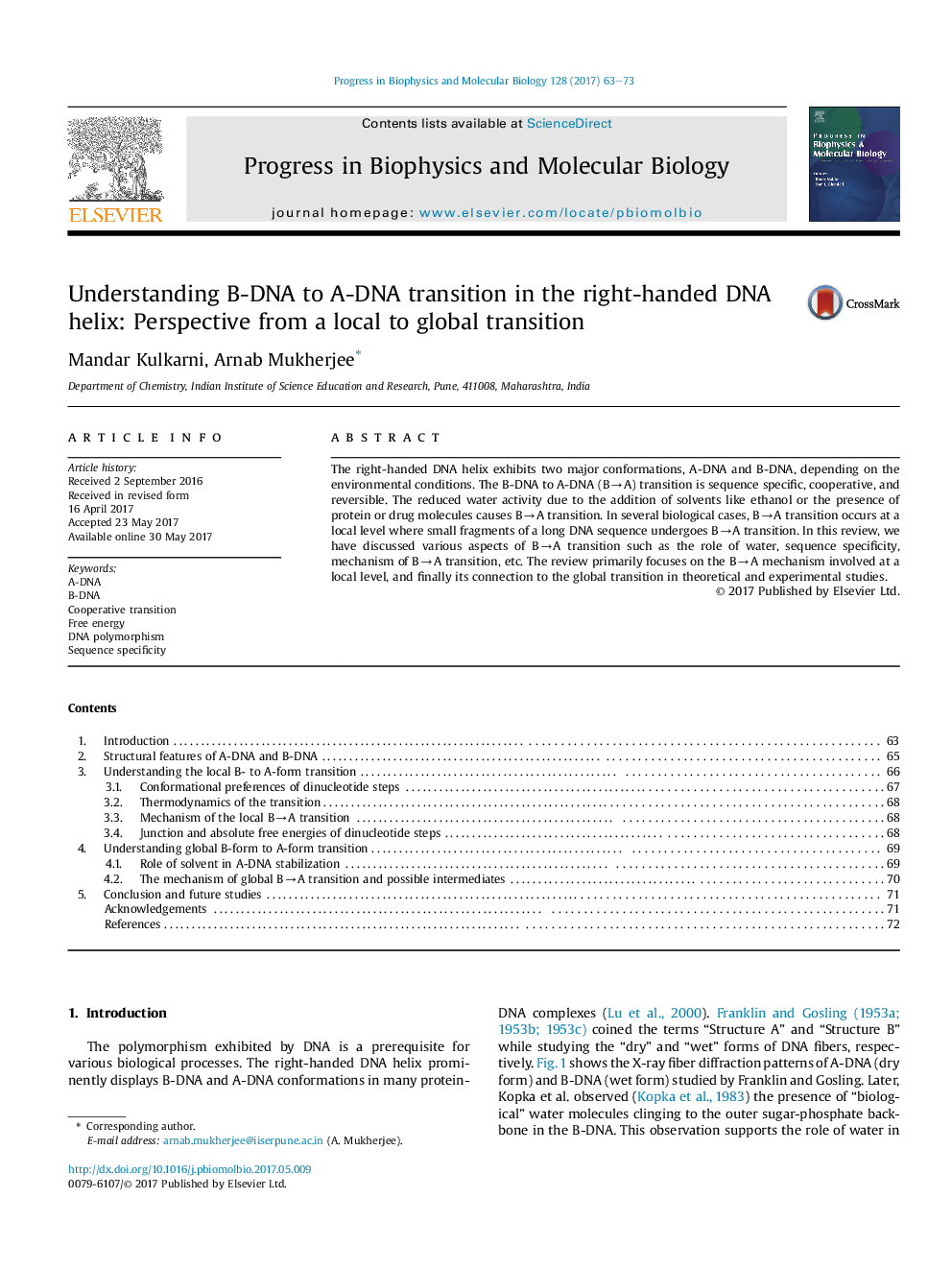| کد مقاله | کد نشریه | سال انتشار | مقاله انگلیسی | نسخه تمام متن |
|---|---|---|---|---|
| 5519916 | 1544471 | 2017 | 11 صفحه PDF | دانلود رایگان |

The right-handed DNA helix exhibits two major conformations, A-DNA and B-DNA, depending on the environmental conditions. The B-DNA to A-DNA (BâA) transition is sequence specific, cooperative, and reversible. The reduced water activity due to the addition of solvents like ethanol or the presence of protein or drug molecules causes BâA transition. In several biological cases, BâA transition occurs at a local level where small fragments of a long DNA sequence undergoes BâA transition. In this review, we have discussed various aspects of BâA transition such as the role of water, sequence specificity, mechanism of BâA transition, etc. The review primarily focuses on the BâA mechanism involved at a local level, and finally its connection to the global transition in theoretical and experimental studies.
Journal: Progress in Biophysics and Molecular Biology - Volume 128, September 2017, Pages 63-73